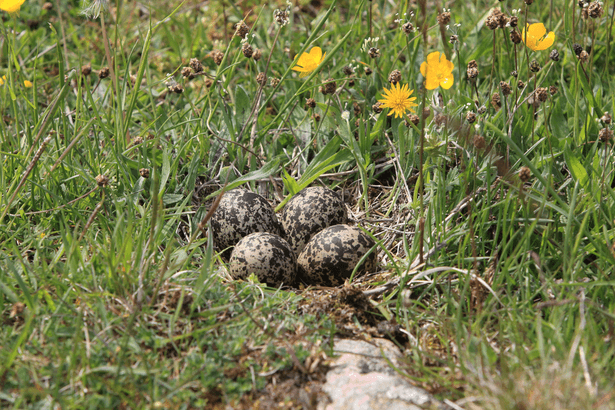The lapwing is practically indistinguishable from any other bird, which makes it much easier to observe than other species. Let’s take advantage of this opportunity to learn a little more about this species, which is very present in our fields and surrounding areas.
The lapwing (Vanellus vanellus) is a wading bird – with little stilts to evolve in a humid environment therefore – which has something intriguing and which is well worth a little spotlight in the ordinary biodiversity category. If the song of the lapwing is recognizable especially because he loves to exercise all day long, this bird has many other finery in his feathers!
The lapwing, a small wading bird that does not go unnoticed
The lapwing has a crest… Well, but what else? He is very good at hunting insects and invertebrates, which he feeds on. He has in fact developed two techniques for this to begin with tap the ground with one of its paws to simulate rain and thus encourage earthworms to come to the surface to capture them. It also performs quick little steps before stopping abruptly and listening intently to catch anything that makes noise.
The lapwing breeds in March with an opening of hostilities that begins with a specific flight of the male who parades in this way to seduce the females. The latter then choose a cavity on the ground where they will lay their eggs. 3 to 4 eggs which will take 3 to 4 weeks to hatch.
The chicks will then quickly leave the nest. in search of food, but this will not stop the female from to watchof them help and even of them warm again if needed.
The lapwing flight is characteristic of a particularly agile species © Dennis Jacobsen
Peculiarities of the lapwing
The first peculiarity of the lapwing is that it is a very territorial bird during the breeding season. It can then be relatively aggressive to protect its patch. But after this period, The lapwing gathers in flocks of several dozen specimens.
The second particularity which is not the least, This is because the lapwing now frequents agricultural areas, whereas originally it largely preferred wetlands. Like the wolf, which used to frequent the plains and now lives in the mountains, the lapwing has adapted to the invasive presence of humans.
Protected status of the species
The lapwing is “Near Threatened” globally and according to the International Union for Conservation of Nature (IUCN Red List). At European level, however, it is considered “vulnerable” and downright “in danger” in Alsace, Auvergne et Burgundy.
Let’s discover the song of the lapwing
Threats to the lapwing
Agricultural mechanization
The northern lapwing nests on the ground, any mechanization is a real risk for it if it does not take into account its possible presence. If adults have the ability to react and fly away in the event of the passage of machinery, this is not the case for the chicks huddled together in an unsuccessful attempt to protect themselves.
L’agriculture intensive
Conventional large-scale crops tend to use pesticides to limit the presence of insectsit is food that is becoming scarce for the lapwing on these plots.
But that’s not all, plowing and the passage of harrows to level the landfinding quality cavities to build nests also becomes complicated for the lapwing which then struggles to reproduce.
The disappearance of wetlands
While the lapwing adapts well to agricultural areas, The presence of wetlands is however favorable to it.But these wetlands are constantly disappearing, regressing or even changing typology throughout its distribution area, which does not make life any easier.

And lapwing egg is recognizable and can be saved from destruction if spotted in time © Frank Fichtmueller
How to help the lapwing
The lapwing needs both a favourable habitat and protection from involuntary destruction in agricultural areas. Don’t hesitate to go and talk to the farmers who have lapwings in their fields, they might not know it and need you to make passages on their fields to spot them before they pass by with their machines!
If you observe it somewhere, perhaps you are the first in some time to hear it in that precise place. You can then, thanks to Visionature of the LPO, indicate your observations and ensure that our level of knowledge improves always and again on this species.
To better protect the lapwing, we need to know where it is and how it works, which is a whole everyone can have a role to play.
Banner illustration: The lapwing is easily recognizable © Pim Leijen
consoGlobe also recommends…
Source: www.consoglobe.com


